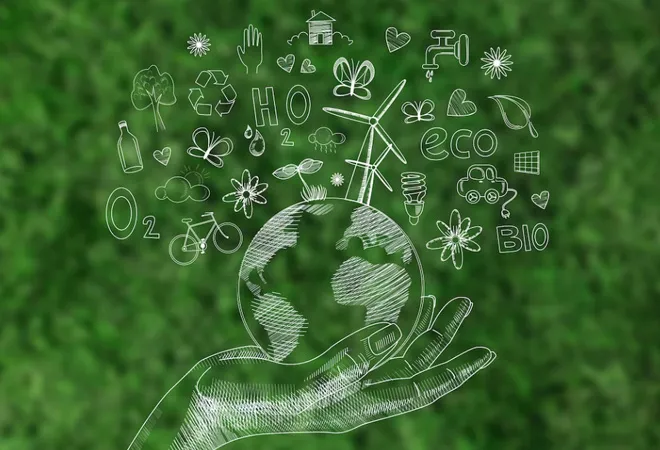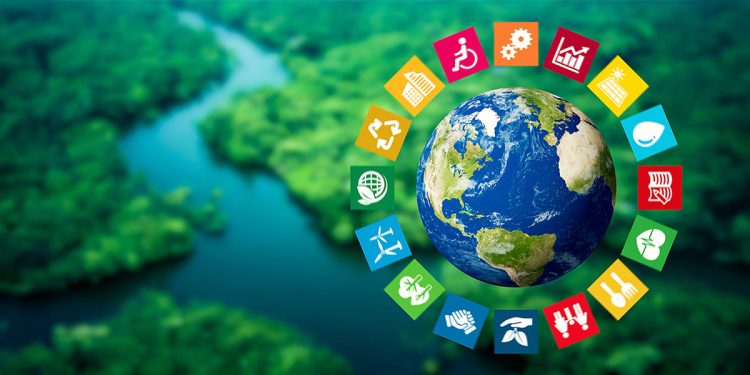Introduction: The Power of Individual Choices
Sustainable development is often discussed in the context of governments, corporations, and international agreements. Yet, individual behavior and consumption patterns play a pivotal role in shaping a sustainable future. From the food we eat to the products we buy, lifestyle choices collectively influence environmental health, social equity, and economic stability.
This article explores how individuals can adopt sustainable consumption and lifestyles, highlights practical strategies, examines the global context, and provides actionable guidance for making meaningful change.
1. Understanding Sustainable Consumption
1.1 Defining Sustainable Consumption
Sustainable consumption refers to using goods and services in a way that minimizes environmental impact, preserves resources, and ensures social equity. Core principles include:
- Reducing waste and pollution
- Choosing renewable or responsibly sourced products
- Supporting fair labor and ethical production practices
By aligning consumption with sustainability goals, individuals contribute to SDG 12: Responsible Consumption and Production.
1.2 The Environmental Footprint of Daily Life
Daily choices impact the planet in various ways:
- Energy use in homes and transportation contributes to greenhouse gas emissions
- Food choices affect land, water, and biodiversity
- Consumer goods production generates waste and resource depletion
Understanding this footprint is the first step toward conscious, sustainable behavior.
2. Sustainable Food Choices
2.1 Plant-Based and Low-Carbon Diets
Food production is a major driver of environmental degradation. Strategies for sustainable diets include:
- Increasing plant-based meals
- Reducing meat and dairy consumption
- Prioritizing locally sourced and seasonal produce
Research shows that shifting toward plant-based diets can reduce individual carbon footprints by up to 50%, while conserving water and land.
2.2 Reducing Food Waste
Globally, about 1.3 billion tons of food is wasted annually. Individuals can:
- Plan meals and store food properly
- Compost organic waste
- Support organizations rescuing surplus food
Reducing food waste conserves resources and reduces methane emissions from landfills.
2.3 Sustainable Sourcing
Consumers can influence global supply chains by:
- Choosing products with fair-trade or eco-certifications
- Supporting regenerative and organic farming practices
- Avoiding products linked to deforestation or habitat destruction
Informed choices drive demand for environmentally responsible agriculture.
3. Eco-Friendly Fashion and Personal Goods
3.1 Circular Fashion
The fashion industry generates 10% of global carbon emissions and massive textile waste. Sustainable strategies include:
- Buying durable, timeless clothing
- Opting for recycled or organic materials
- Participating in clothing swaps or resale platforms
Circular fashion reduces resource extraction and landfill accumulation.
3.2 Minimalism and Conscious Consumption
Adopting minimalism emphasizes:
- Prioritizing quality over quantity
- Reducing impulsive purchases
- Evaluating the life-cycle impact of products
This mindset fosters sustainable consumption habits across all areas of life.
3.3 Sustainable Electronics and Appliances
Electronic waste is a growing environmental concern. Individuals can:
- Extend device lifespans through repair
- Recycle responsibly
- Choose energy-efficient appliances
These practices reduce e-waste and conserve critical minerals.
4. Energy and Transportation Choices
4.1 Reducing Household Energy Use
Individuals can lower energy consumption by:
- Switching to LED lighting and efficient appliances
- Installing programmable thermostats and smart meters
- Using renewable energy sources like rooftop solar
Energy efficiency directly reduces carbon emissions and utility costs.
4.2 Sustainable Transportation
Transportation choices have a major environmental impact. Options include:
- Walking or cycling for short trips
- Using public transportation
- Choosing electric or hybrid vehicles
Combining these strategies with urban planning initiatives amplifies impact on emissions reduction.
4.3 Lifestyle Integration
Planning daily routines to minimize travel, consolidate errands, and work remotely reduces energy use while promoting well-being.
5. Water Conservation and Waste Management
5.1 Efficient Water Use
Water scarcity affects millions globally. Individuals can:
- Install low-flow faucets and showerheads
- Capture rainwater for gardening
- Avoid overuse of irrigation systems
Responsible water use preserves essential resources and supports SDG 6.
5.2 Recycling and Circular Practices
Proper waste management includes:
- Separating recyclables and compostables
- Reducing single-use plastics
- Supporting products with recyclable packaging
Circular waste practices reduce landfill pressures and pollution.
5.3 Upcycling and Creative Reuse
Transforming old items into new uses — such as turning glass jars into storage containers — fosters creativity while reducing environmental impact.

6. Financial Choices and Ethical Investment
6.1 Sustainable Banking and Investing
Individuals can align finances with sustainability goals:
- Choosing banks with green policies
- Investing in ESG-compliant funds
- Supporting community development projects
Financial choices influence global markets and promote responsible business practices.
6.2 Supporting Local Economies
Purchasing from local producers and small businesses:
- Reduces transportation emissions
- Strengthens community resilience
- Encourages sustainable practices
Localized consumption benefits both the environment and society.
6.3 Conscious Consumerism
Before making purchases, individuals can ask:
- Is this product necessary?
- What is its environmental and social impact?
- Can I buy sustainably or second-hand?
Conscious consumerism fosters mindfulness and reduces resource depletion.
7. Digital Lifestyle and Sustainable Technology Use
7.1 Reducing Digital Carbon Footprint
Digital activities consume energy. Strategies include:
- Cloud storage with green energy providers
- Reducing unnecessary streaming and device usage
- Energy-efficient hardware
These measures minimize the indirect environmental impact of a digital lifestyle.
7.2 Online Advocacy and Education
Individuals can leverage technology to:
- Educate peers about sustainability
- Support digital campaigns for climate and social causes
- Engage in citizen science and community initiatives
Digital tools amplify impact and foster global awareness.
8. Social Engagement and Community Action
8.1 Participatory Urban Initiatives
Residents can participate in:
- Community gardens and local food cooperatives
- Urban clean-ups and reforestation projects
- Local sustainability planning councils
Community engagement strengthens social cohesion and enhances sustainability outcomes.
8.2 Collaborative Consumption
Sharing platforms — for cars, tools, and living spaces — reduce material consumption and environmental impact. Collaborative consumption fosters resource efficiency and social connectivity.
8.3 Advocacy and Policy Influence
Individuals can influence sustainable development through:
- Voting for environmentally responsible policies
- Engaging in public consultations
- Supporting NGOs and advocacy organizations
Active civic participation ensures collective sustainability efforts are inclusive and effective.
9. Cultural and Lifestyle Transformation
9.1 Shaping Norms and Values
Sustainable lifestyles require cultural shifts:
- Valuing quality and longevity over disposability
- Embracing minimalism and ethical consumption
- Prioritizing health, well-being, and environmental stewardship
9.2 Education and Youth Engagement
Educating younger generations fosters lifelong sustainable habits:
- School programs on climate and resource use
- Youth-led sustainability projects
- Community workshops and experiential learning
Empowered youth drive social change and reinforce sustainable culture.
9.3 Media and Awareness Campaigns
Media plays a critical role in shaping behavior:
- Documentaries, blogs, and social campaigns raise awareness
- Highlighting positive stories encourages action
- Combatting misinformation ensures informed decision-making
10. Global Perspectives and Best Practices
10.1 International Movements
Initiatives such as Zero Waste, Earth Hour, and Plastic-Free campaigns showcase the impact of collective individual action.
10.2 Successful National Examples
Countries promoting sustainable consumer behavior include:
- Sweden: National recycling programs and energy-efficient lifestyles
- Japan: Waste segregation culture and sustainable consumption campaigns
- Costa Rica: Eco-tourism and renewable energy integration
10.3 Lessons Learned
Key lessons for individuals worldwide:
- Small, consistent actions compound into large impacts
- Collective behavior influences markets and policies
- Awareness, education, and accessibility are crucial for adoption
Conclusion: Empowering Individuals for a Sustainable Future
Sustainable consumption and lifestyle choices are powerful tools for shaping a resilient, equitable, and environmentally sound future. While governments, corporations, and global institutions play critical roles, individual actions collectively drive systemic change.
By adopting mindful consumption patterns, supporting ethical products, conserving energy and water, embracing sustainable transportation, and participating in community initiatives, each person contributes to global sustainability goals.
The path to a sustainable future begins with awareness, education, and intentional behavior. Individuals, empowered with knowledge and tools, can transform not only their own lives but also communities, industries, and the planet.
Every meal, every purchase, every action counts. In the 21st century, sustainable lifestyles are both a responsibility and an opportunity — a chance to ensure that future generations inherit a world rich in resources, health, and opportunity.











































